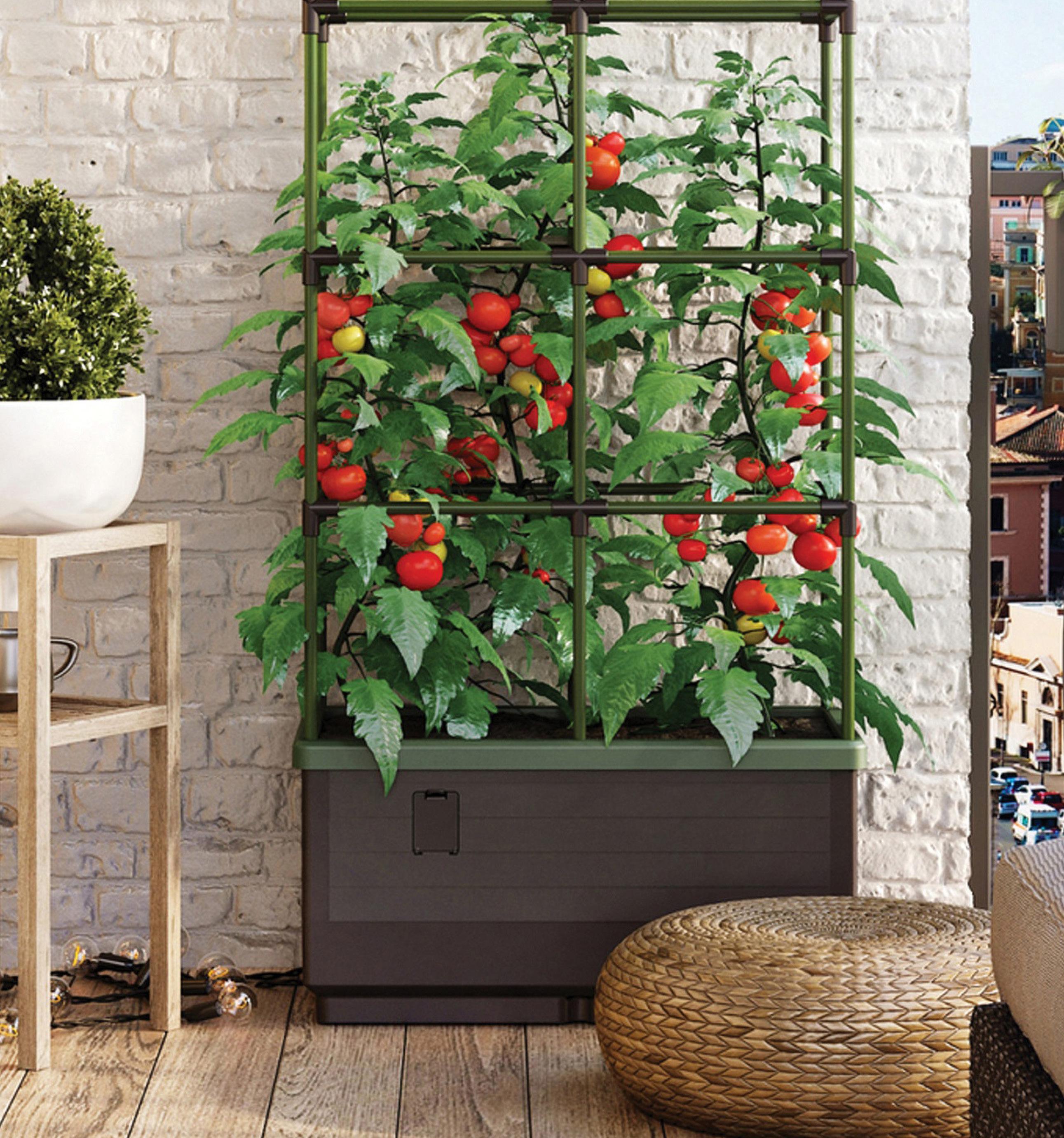
3 minute read
THE SCENE
Upward Growth
Maximize the beauty and harvests of vertical gardening.
Advertisement
TEXT MELINDA MYERS
This spring, consider going vertical to expand your outdoor gardening space, create privacy, and add beauty to bare walls and fences. This centuries-old technique has been used to grow food and fl owers, cultivating productivity from the ground up. Gardening on a small city lot, balcony, or deck? Maximize the space to expand your gardening opportunities.
Ideal vertical plants include pole beans, peas, squash, melons, tomatoes, and other vining edible plants. With supports, growing these crops vertically saves space, reduces the risk of disease, and makes harvesting much easier. Include trellises and arbors in raised beds and elevated gardens to further maximize growing space. Trellises train vines upward while arches allow you to grow two layers of plants— one over the trellis and one below.
Grow annual vines for quick cover and perennial vines for years of beauty. Mix the two to quickly cover the trellis with the annual vine while waiting for the perennial to establish and reach its mature size. Plant two vines with diff erent bloom times on one trellis to extend the colorful fl ower display. Or look for those that bloom at the same time to double the fl oral impact.
Vertical gardening techniques can also be used when gardening in containers. Create your own or purchase a support that securely fi ts and supports vines growing in the container. Some containers come with an integrated trellis. Further reduce maintenance by utilizing a self-watering pot like the City Jungle Self-Watering Tomato Planter large enough to grow and support two indeterminate tomatoes. Some containers can be mounted on a wall or fence or stacked and secured vertically to increase growing space. Systems like the Vigoroot 4-Tiered Balcony Garden provide lots of planting space in just a few square feet.
Decorative supports add beauty or a focal point year-round. Select the style—rustic, formal or colorful—that complements your garden design, furnishings, and personality. Make sure whatever you choose is strong enough to support the plants you grow. Mask rain barrels, compost bins and other functional areas in the landscape with a wall of plants. Leave space for easy access as you fi ll your compost bin or harvest fi nished compost and rainwater.
Use trellises and arbors to brighten often overlooked spaces. A vine-covered arbor makes a nice fl oral welcome at the entrance to a walkway or colorful transition between garden areas. Make sure the opening is large enough to accommodate visitors and any equipment needed. Dress up a lamp or mailbox post with a vine covered support. Create your own from chicken wire or

Grow a vegetable garden vertically in a compact space, whether on a balcony or patio.
ABOUT THE AUTHOR Melinda Myers is the author of more than 20 gardening books, including Small Space Gardening. She hosts The Great Courses How to Grow Anything DVD series and the Melinda’s Garden Moment TV & radio program. Myers is a columnist and contributing editor for Birds & Blooms magazine. Her web site is melindamyers.com.
purchase a curved trellis like the Bosmere Trellis (gardeners.com) suitable for this application.
You can easily dress up a bare wall or fence, screen a bad view, or create privacy with a plant-covered trellis. Leave space between the wall and trellis when gardening next to a building. This space allows airfl ow between the building and plants, reducing the risk of mildew on the wall and diseases infecting the plants.
No matter your style and location, vertical gardening can help you maximize your growing space and garden’s beauty.




